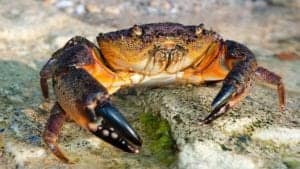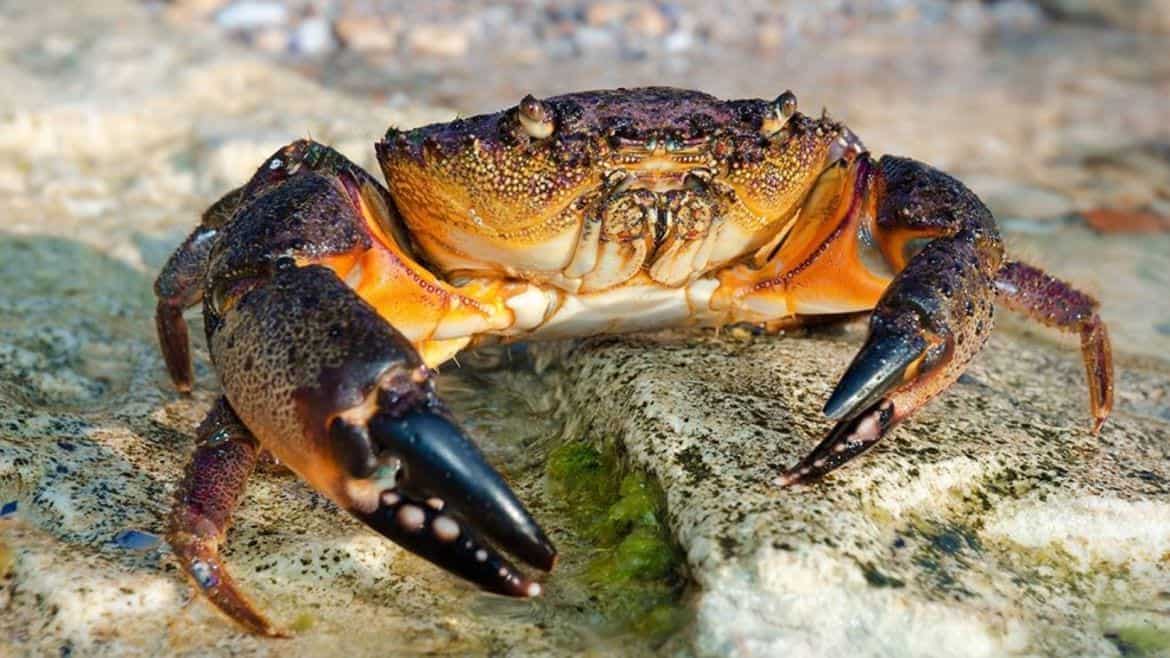
An unusually long toxic algae bloom, also known as the red tide, is likely to blame for a shortage of stone crabs (a popular delicacy during the holiday season) in Florida this year.
Specifically, certain areas along the gulf coast — such as Everglades City — have been impacted by the shortage. One seasoned fisherman there, Rick Collins, recently told The New York Times this stone crab season — which occurs annually from October to May — is “about the worst I’ve ever seen it.”
FLORIDA BEACHES LITTERED WITH DEAD SEA TURTLES; SCIENTISTS BLAME RED TIDE
Stephen Sawitz, the owner of Joe’s Stone Crab in South Beach, told the newspaper the stone crab supply “has been off” roughly 40 percent so far this year. Last year’s not-so-great season brought in 2.1 million pounds of stone crabs compared to an average of 3.7 million pounds, according to the Tampa Bay Times.
The red tide bloom is a harmful algal bloom (HAB) that occurs when “colonies of algae — simple plants that live in the sea and freshwater — grow out of control while producing toxic or harmful effects on people, fish, shellfish, marine mammals and birds,” according to the National Ocean Service. While this occurrence is a natural one, the current bloom in Florida is one of the longest in recent memory, lasting more than a year, according to The New York Times.
This year’s red tide has likely been worse and more prolonged due to human activities such as farming, development and manufacturing, Richard Bartleson, a research scientist with the Sanibel-Captiva Conservation Foundation, previously told Fox News.
Over the past number of years, the build-up of chemicals — such as phosphorus and nitrogen, among other elements typically found in fertilizer — have provided “the perfect nutrients” to worsen the bloom, Bartleson said. These chemicals reach the ocean through surface runoffs, which occur after a rainstorm, tropical storm or hurricane.
Bartleson said the current red tide is partly due to the surface runoffs caused by Hurricane Irma, while the red tide that affected much of the state’s central-west coast in 2005 and 2006 were worsened by the state’s active hurricane season in 2004.
Generally, in sea life, the toxin from the red tide “affects the nervous system and red blood cells,” he noted.
While stone crabs have a natural resistance to the bloom — and can typically “bounce back” from it, Fox 13 reports — the prolonged occurrence this year has likely affected the stone crabs’ ability to do just that.
“Once it gets beyond the three-day mark, we begin to see an increase in the animals’ stress response and we also see an increase in the mortality of the animal,” Philip Gravinese, a researcher with the Mote Marine Laboratory in Sarasota, told the news station.
“That’s another reason a couple of years beyond the bloom we see a decrease in [the] catch,” he added.
A lack of oxygen in the water due to the red tide toxin may also be impacting the stone crabs.
While the stone crab population in certain parts of the state have largely evaded the effects of the red tide, according to the Tampa Bay Times, the same is not true for many fishermen in Florida — at least one of whom told The New York Times he was forced to sell his fishing boat and crab traps.
MYSTERIOUS SEA CREATURES WASHED UP IN 2018, FROM SHAGGY-HAIRED ‘GLOBSTER’ TO ‘CONTRACTING’ BLOB
“I can’t survive in the fishing business,” Eddie Barnhill, a crabber from Pine Island, told the publication. “I used to run 50 miles one way to go crabbing, and there ain’t crabs there now. There [are] crabs 150 miles out, but you can’t do that in one day.”
The shortage is not just affecting crabbers. Those hoping to dine on the delicacy may have to pay more this year. In fact, the famous Joe’s Stone Crab restaurant was forced to raise the price of stone crab claws for the first time in three years, The New York Times reported.
#fishingbradenton #redtide #stonecrab

